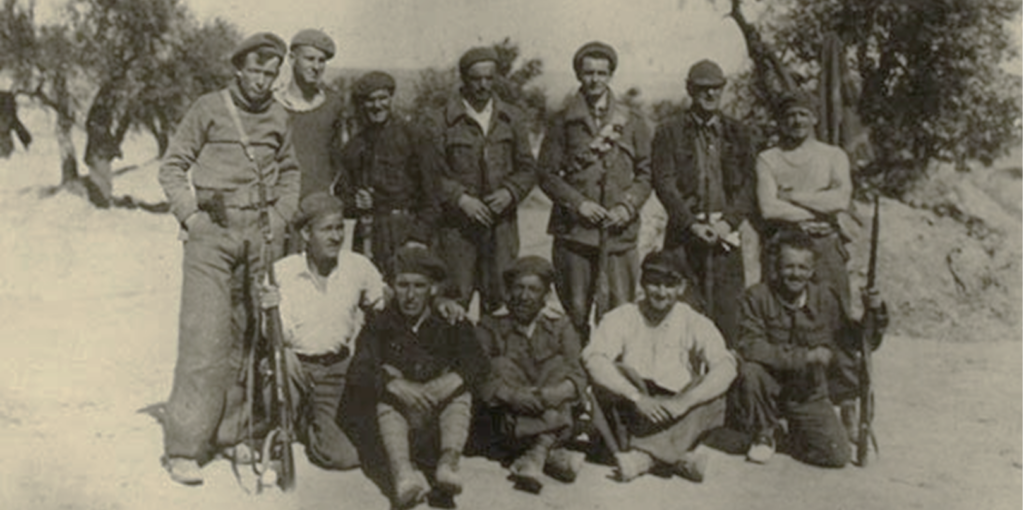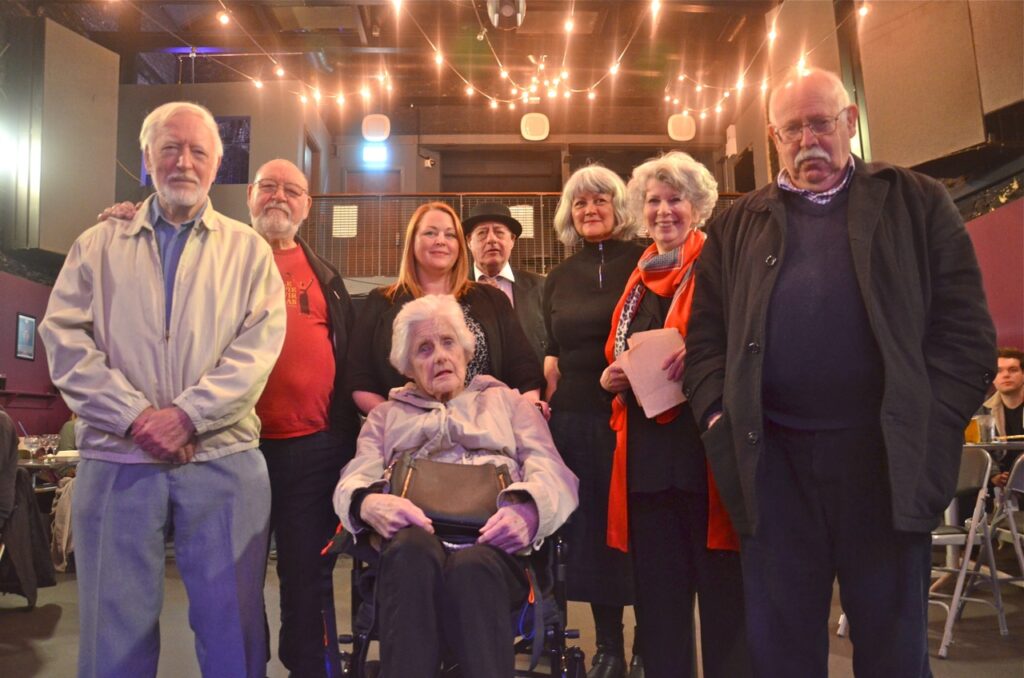In Search of Patrick Maroney, a Teesside Volunteer in the Lincoln Battalion
Teesside, an industrial region in Northeast England that in the nineteenth century grew to be a center of shipbuilding and iron and steel production, spawned no fewer than thirty International Brigade volunteers. Of the nine who were born in the borough of Stockton-on-Tees, moreover, six played leading roles in Spain: five rose to the rank of Lieutenant and one served as the British Battalion Commander. One Stockton born volunteer, Patrick Maroney (1906-1959), even served in Spain as a member of the Abraham Lincoln Battalion in the XV International Brigade. What explains this remarkable track record?
In many ways, Stockton was no more noteworthy than most towns in the Northeast of England in the 1920s and 1930s: high unemployment was not exceptional, and the local authorities’ response to the postwar economic slump was no different to those of other authorities locally and nationally. What made Stockton-on-Tees exceptional in this period was the Teesside Communist Party, which was small but very active—thanks in large part to George Short, who served as district organizer for Teesside from 1928 until 1971. From its base in Stockton, the CP carried out a series of successful campaigns to alleviate the worst aspects of the economic downturn. It also raised awareness of international events and challenged the rise of fascism both locally and nationally. It is not surprising then that the outbreak of the Spanish Civil War prompted an exceptional response from the Teesside Communists.
Most of the International Brigade volunteers from Stockton worked in shipbuilding, steelmaking, and chemical production, the heavy industries that dominated Teesside in the 1930s. Patrick Maroney, who worked at the Stockton Steel Foundry on the banks of the River Tees, was a member of the Irish Republican Congress (IRC). (Founded in 1934 when pro-communist Irish republicans broke away from the Irish Republican Army (IRA), the IRC was led by activists like George Gilmore, Peadar O’Donnell, and Frank Ryan.) Maroney was interviewed by George Short in his Thornaby home and then left for Spain in late December 1936.
It has been difficult to confirm details about Maroney’s service in Spain, and the archival research has proven laborious. Still, we were fortunate to find the precise date Patrick left for Spain in a very unusual source—his MI5 file. As it turns out, Special Branch interviewed Patrick on his return from Spain, as he stepped off the boat at Newhaven on June 17, 1937. This interview gave us both his date of departure and the exact date of his repatriation. A summary of the interview states:
General History
2.1.37. Went to Spain via France
17.6.37. Returned from Spain via Dieppe giving false reason for his visit there. Denied having been member of any military force in Spain & would give no information as to his activities there or his political opinions. (SB8 rep. no ref. no.)
Travelled on Emergency Certificate from Barcelona to London dated 11.6.37. Signed Norman King (Consul General) (NA KV2 PF 45877)
Research into the records of the British battalion held in the Russian State Archives of Social and Political History (RGASPI, hereafter Russian Archives), was less successful, because Maroney does not appear in the British records until five months after his arrival. The briefest of entries, written in June 1937, mentions a “P Maroney” against the number 1007. There is no additional information: no address, no trade, no index card. Although he had been in Spain for almost six months by then, oddly there seems to be no evidence of where he had been and what he had been doing.
The Connelly Column
A further breakthrough in our research came a few months later when we found a note in the Russian Archives dated February 8, 1937, indicating that Maroney enrolled in the Lincoln Battalion. It seemed to imply that he had been there for some time:
BATTALION HEADQUARTERS
February 8, 1937
General Order #13 Subject Permanent Cooks
The names of the following men are to be stricken from the various company rosters:
Robinson, J.
O’Donnell, V
Greenleaf R.
Maroney, P
Fennelly, W
Thurston, G.
Peck, S.
These men are assigned to permanent duty as Cooks.
By Order of Battalion Clerk (RGASPI 545/3/499)
This prompted a new hypothesis. Had Maroney been part of the small group of Irish republicans who left the British Battalion for the Lincoln Battalion on January 12, 1937? Richard Baxell, the author of Unlikely Warriors, records:
A meeting was called on January 12 by, it appears, Dave Springhall, the battalion commissar, which was attended by approximately 45 Irish members of the battalion. During a stormy session, a number demanded that the group leave the British dominated battalion, whilst others, who wished to remain, vigorously argued “that distinctions must be made between anti-fascist working-class comrades from Britain and British imperialism.” At the end of the meeting, the Irish group voted by a ratio of two to one (26-11) to leave and join the Americans in the Abraham Lincoln Battalion at nearby Villanueva de la Jara.
Frank Ryan, who was in Madrid at the time of the meeting, persuaded half of the 26 men to return to the British Battalion. But Maroney was not among them. As the February 8 note shows, he was with the Americans as part of “The Irish Section” three weeks later. As more Irishmen and Irish Americans arrived at Albacete, many were placed in what they began to call “The Connelly Column,” a distinctly Irish unit within the American Battalion.
Maroney is also mentioned in the pamphlet The Story of the Abraham Lincoln Battalion, written in the trenches of Spain, published by the FALB in 1937, where the Lincoln Battalion volunteer Vincent O’Donnell describes the death of American volunteer Robert “Slim” Greenleaf. It begins:
The following story of Slim Greenleaf comes from the pen of V. O’Donnell.
“On the night of our offensive, February 23rd, Maroney, Slim Greenleaf and myself left the farmhouse at six p.m. as usual, with the battalion’s supper on our Truck. (RGASPI 545/3/176)
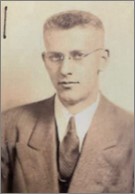
Robert Greenleaf, Passport Photograph
This information is corroborated by the February 8, 1937 document, which indicates that Greenleaf, Maroney, and O’Donnell were assigned to permanent duty as cooks. O’Donnell describes their adventures before arriving at the British Battalion munitions dump. They unload the food they have prepared and carry it up to the Lincolns in the frontline trenches, where they hear about a Cuban comrade who had been lying wounded between the trenches since that morning, Vincent takes up the story:
Whatever was passing in Slim’s mind that night we shall never know. His thin and youthful face cleared as he said, “Come on, boys, let’s go!” Slim and Maroney were to join the other comrades of the rescue at the Dressing Station, one hundred meters further on, near the bend of the road. As the night closed around them, Slim appeared to be silent, while Maroney was doing the talking.
An hour passed at least when Maroney returned. He was alone. An explosive bullet had killed Slim as he crawled along four meters behind his companions.
The Russian Archives contain another document in which a fellow Lincoln Battalion volunteer, Jacob Menelowitz (Joe Gordon), also describes the death of Robert Greenleaf, who was known as Ralph, and with whom Jacob had travelled to Spain:
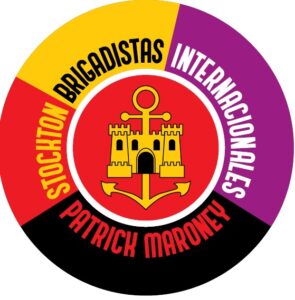 Our first aid man Ralph Greenleaf and another comrade from the food truck, Tanz and myself. We took a stretcher with us. and started to go out again. Two of the first aid men came in, both were wounded in the legs, I don’t know how they managed it. The firing was almost nil, we started walking up the road almost to the halfway mark when we bunk into Paul Burns and another comrade (Gomez) carrying in Scott. Telling the other comrades to wait for us, Toplianos and I took the stretcher and carried Scott into the first aid station. Scott was still alive, I felt very glad all our efforts had not been in vain. Toplianos and I went up the road again, we caught up with the other comrades, comrade Tanz was not around. We got off the road and started crawling, they opened up bursts of fire. Whenever they opened up, we would be still and then continued. After a hard burst of fire at us had ended, I pushed the comrade next to me and said, “Let’s go.” He didn’t move, I looked at him and we found that comrade Greenleaf had been shot right through the helmet, he died instantly without a sign, a pool of blood forming quickly.
Our first aid man Ralph Greenleaf and another comrade from the food truck, Tanz and myself. We took a stretcher with us. and started to go out again. Two of the first aid men came in, both were wounded in the legs, I don’t know how they managed it. The firing was almost nil, we started walking up the road almost to the halfway mark when we bunk into Paul Burns and another comrade (Gomez) carrying in Scott. Telling the other comrades to wait for us, Toplianos and I took the stretcher and carried Scott into the first aid station. Scott was still alive, I felt very glad all our efforts had not been in vain. Toplianos and I went up the road again, we caught up with the other comrades, comrade Tanz was not around. We got off the road and started crawling, they opened up bursts of fire. Whenever they opened up, we would be still and then continued. After a hard burst of fire at us had ended, I pushed the comrade next to me and said, “Let’s go.” He didn’t move, I looked at him and we found that comrade Greenleaf had been shot right through the helmet, he died instantly without a sign, a pool of blood forming quickly.
It appears that Maroney, “another comrade from the food truck,” served with the Lincoln Battalion through the winter months of the battalion’s trench vigil on the Jarama Front. The conditions at the front—cold weather, poor shelter—and the Spanish diet may have contributed to the decline in Maroney’s health and ultimately prompted his repatriation. Peter Verburgh confirmed the reason for Maroney’s repatriation in a medical note in the Russian Archives, which is typed in French and lists 45 men. Verburgh’s translation tells us about Maroney’s state of health:
21/4/37 REPORT OF THE MEDICAL COMMISSION COMPOSED OF Dr.Bachrach and Littwack
4 – Maroney Patrick – 28 years old – English – Spain on 2/1/37 – accountant -S.R.I. 2-15 Bri Bat.
Lincoln – Stomach tumour? diabetes? – treatment in Murcia (RGASPI 545/3/696)
Finding a Photograph
In 2023, eight Stockton volunteers, including Maroney, were honored with a memorial. To raise money for the memorial, we produced a Golden Smog Warriors Basketball team’s shirt in Republican colors and the book I Sing of My Comrades, which describes the stories of the eight men. For each, we also produced a Brigadistas badge with their name and image. There was one problem: Bill Carson or Maroney. Remarkably, even Maroney’s family had no photographs of him, not even from after the war.
More recently, however, Tam Watter, the son of a volunteer, led us to a likely image of Maroney. An article about the Irish section of the Lincoln Battalion in the Russian Archives includes a photograph whose caption suggests that it showed the ALB’s Irish section prior to the Battle of Jarama. The picture showed thirteen men—the exact number who remained with the Americans at the time.
Working with Watter, Verburgh, and Dr. Ray Hoff, we agreed that Maroney was most likely portrayed in an earlier picture that, as Ray has demonstrated, shows the Irish section at Jarama. The available evidence suggested that Patrick Maroney could not be in the picture that accompanied the Russian Archive report or another two photographs showing the “Irish Section.”
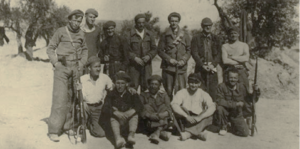
Irish Section, Jarama Front
A further complication arose when we found that Maurice Moran, an Irish American volunteer, was one of those named in the photograph labelled “Company 1, Section 2 – The James Connolly Column, on the Jarama Front.” Moran was born in County Mayo, Ireland, in 1911, but his family moved to American when he was a child. Maurice left America on December 26, 1936, and arrived in Spain at the same time as Patrick Maroney. In Spain he went by “Patrick,” which means that Patrick Moran and Patrick Maroney served in the same unit and possibly appeared in the same picture.
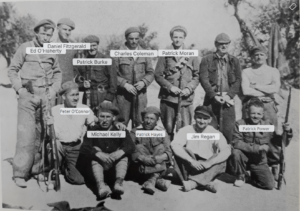
Standing l-r: Ed O’Flaherty, Daniel Fitzgerald, Patrick Burke, Charles Coleman, Patrick Moran, unidentified and tentative Patrick Moroney. Front row: Peter O’Connor, Michael Kelly, Patrick Mayes, John Regan, Patrick Power, Jarama, Spring 1937.
Ray Hoff was able to provide names for ten of the twelve men shown in the photograph. The two unknowns are in the back row at the end of the row, standing next to Patrick Moran. Without other photographs to compare, we reached a point where we had to be content with the knowledge that Maroney served with these men, without being able to confirm that he was in this photograph. Still, this was much better than what we had up until this point.
My research into the volunteers has taught me that it is always worth testing a supposition. Even when this has proved incorrect, we usually gain valuable information. I sent the photograph without any labels to Mich Maroney, the great niece of Patrick Maroney, not telling her we knew the names of most of the men. I asked her to examine the photograph to see if she recognized any family resemblance in any of the men. Mich replied that one had a very strong resemblance. If any of them was Patrick, she said, it was “the little guy on the end.” I must admit I also thought that this guy bore a striking resemblance to Patrick’s great nephew Chris, but I had kept this to myself as I did not want to influence others. The man she pointed out was one of the unknowns at the end of the back row, significantly shorter than the others.
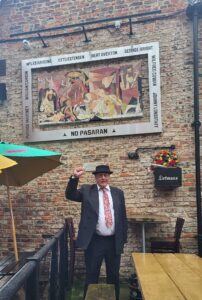
Chris Hill, Great Nephew of Patrick
I also showed the photograph to Chris, Patrick Maroney’s great nephew. I did not share what Mich had said before showing him the unlabeled picture. Chris did not hesitate before saying about the little guy on the end: “if he was wearing glasses, is the double of my Uncle Michael.”
While Maroney’s grandniece and nephew were looking at the Jarama photograph, Hoff and Verburgh were working to identifying the two unknown men in the back row. Verburgh has been my mentor for years, guiding me through the Russian archives and providing valuable information. He always seems to come up with an answer to a problem, using the most ingenious of methods.
This time, Verburgh could tell me that Patrick Power—the man kneeling in front of the man we were now interested in—was holding a M1891 Mosin Nagat rifle, supplied by the Soviets to Republican Spain. Verburgh knew that this rifle had a length of 1.304 meters. This allowed him to calculate the approximate height of the unknown volunteer: approximately 165 cm, roughly 5’5”. As it turns out, Maroney’s MI5 interview at Newhaven contained a physical description:
“Height, about 5’5” slim build, hair fair, eyes blue, fresh complexion…” (NA KV2 PF 45877).
Considering all the evidence, we feel confident that we have found the only photograph of Maroney in Spain—or anywhere else.
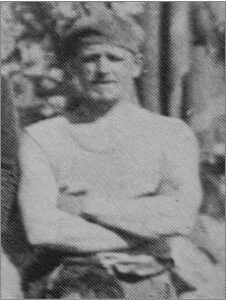
Patrick Maroney
Recalling The Dedication
We were thrilled that Maroney’s niece, grandnieces and nephews took part in the dedication of our Stockton memorial in April 2023. His grandniece Katie spoke on behalf of the family, telling us how proud they were to see Maroney’s service in Spain commemorated.
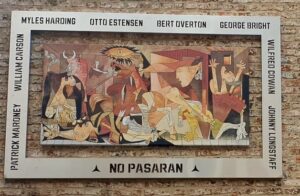
The Stockton international Brigade memorial was dedicated in April 2023 after a five-year campaign led by Stockton publican John Christie. Relatives of Patrick travelled from as far away as Ireland and London to join those living locally for this dedication, the day of events began with the Golden Smog Warriors basketball team holding their Otto Estensen trophy competition, an annual event held in honor of the Stockton Brigader. Elizabeth, Otto’s daughter, awarded the trophy to the winning team. It was Elizabeth and the Golden Smog Warriors, with Patrick’s and other relatives of Teesside volunteers, who led the procession up Stockton’s historic High Street to the Market Cross which stands outside the Town Hall. A dedication ceremony was later held at the new International Brigade memorial in the Wasps Nest Yard in the heart of Stockton’s cultural quarter. An evening of music and talks finished the day of events for the large crowd of supporters and participants.
I am immensely pleased that we now know more about Patrick Maroney’s service in Spain and may even have a photograph of him. I am grateful to Tam Watter, Dr. Ray Hoff, and Peter Verburgh for their support—and to Maroney’s relatives, who have encouraged me to continue to look into his fascinating story. We will continue to commemorate Patrick and all the Teesside Brigaders at our annual events as brave and valiant volunteers for liberty.
The eight men named on the Stockton memorial:
George Bright. Born 1895, Thornaby. Carpenter. Arrived in Spain December 1936. Killed 12th February 1937. Jarama.
William Henry Carson. Born 1905, Stockton. Bank Clerk. Arrived in Spain February 1937. Wounded once. Repatriated July 1937.
Wilfred Cowan. Born 1917, Stockton. Painter. Arrived in Spain April 1937. Wounded three times. Repatriated January 1939.
Otto Estensen. Born 1910,. Thornaby. Seaman. Arrived in Spain April 1937. Wounded three times. Repatriated December 1938.
Joseph Myles Harding. Born 1909, Stockton. Scaffolder. Arrived in Spain January 1937. Wounded twice. Killed 23rd September 1938. Ebro.
John Edward Longstaff. Born 1919. Stockton. Rolling Mill Laborer. Arrived in Spain April 1938. Wounded three times. Repatriated December 1938.
Patrick Joseph Maroney. Born 1908, Stockton. Foundry laborer. Arrived in Spain January 1937. Wounded once. Repatriated June 1937.
Bert Overton. Born 1904. Stockton. Dock worker. Arrived in Spain December 1936. Wounded once. Killed 6th July 1937 Brunete.
The ninth Stockton volunteer is Ron Dennison. He isn’t named on the memorial, due to an error made in 1939, but we are working on a memorial for him in Billingham and plan to put a small memorial in the Wasps Nest to accompany the Stockton memorial. We didn’t think it was appropriate to alter the Stockton memorial.
ALBA Board member Chris Brooks contributed to this article.

